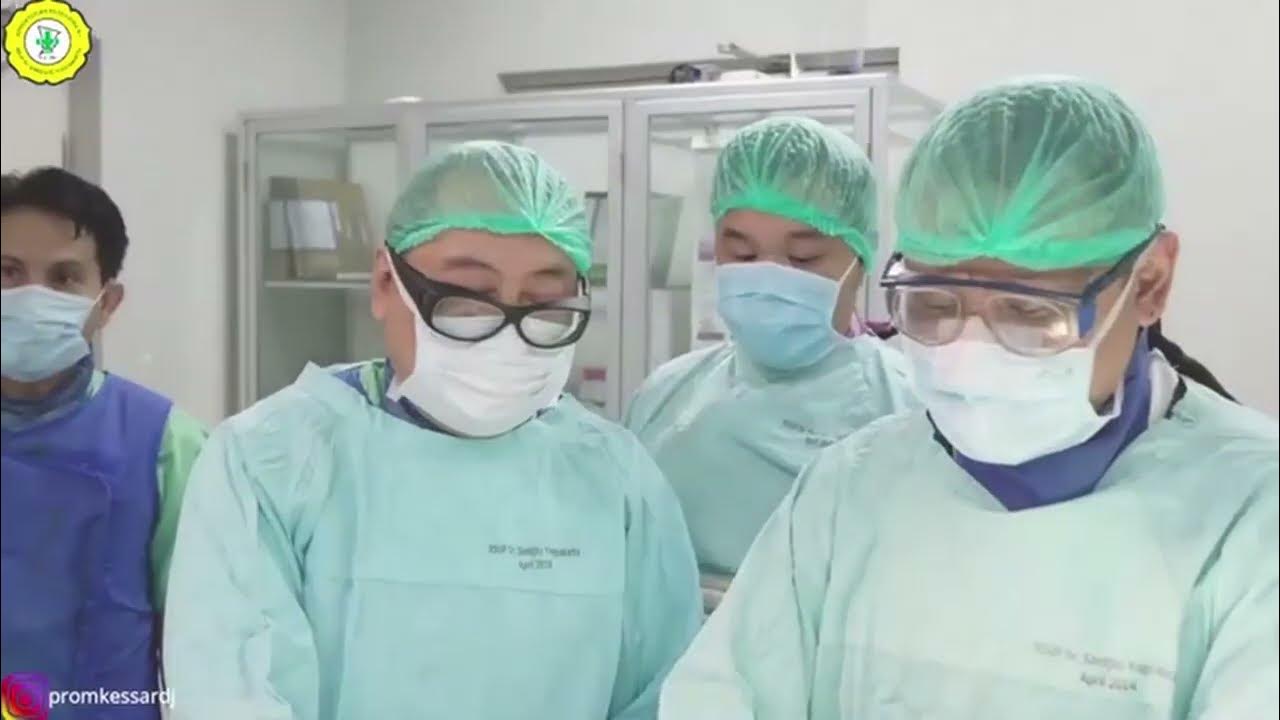lesson 3 part 2 INTRO TO RT
Summary
TLDRThe video script discusses the structure and role of the Radiology Department in hospitals, emphasizing its importance in patient care as part of the diagnostic arm. It covers the various sub-departments like general radiography, ultrasound, nuclear medicine, CT scans, and MRI, and highlights the responsibilities of radiologists and radiologic technologists. The script also explains key management principles in hospital settings, including planning, organizing, and staffing, and underscores the significance of teamwork and communication across departments to ensure high-quality patient care and diagnostic accuracy.
Takeaways
- 😀 Radiology and medical imaging departments are essential for patient care, functioning as part of the hospital's diagnostic arm.
- 📊 Effective radiology services require coordination and cooperation between the radiology department and other hospital departments.
- 🩻 The radiology department includes various sub-departments, such as general radiography, ultrasound, nuclear medicine, CT scans, MRI, and radiation therapy.
- 👨⚕️ The radiology department is led by an administrative director, usually a radiologist, who reports to senior hospital administration.
- 👩⚕️ Radiologists and radiologic technologists (radiographers) play critical roles in producing and interpreting medical images for diagnosing patient conditions.
- 🩺 Radiologic technologists are responsible for producing high-quality images and working in specialized areas like trauma radiography, mobile radiography, and MRI.
- 💼 Key managerial functions within the radiology department include planning, organizing, staffing, directing, and controlling.
- 🧠 Management in radiology involves ensuring that responsibilities are fulfilled, and goals are met through proper leadership and motivation.
- 📋 Managers must maintain a balance between organizational resources, such as personnel and equipment, to ensure efficient department operations.
- 🤝 Communication and coordination with other departments, physicians, and hospital staff are vital for the radiology department's success.
Q & A
What is the main role of the Radiology or Medical Imaging Department in a hospital?
-The Radiology or Medical Imaging Department plays a vital role in patient care by providing data and information needed for diagnosis and treatment. It is part of the diagnostic arm of the hospital, working closely with other healthcare departments to ensure high-quality care.
What are the sub-departments within a Radiology Department?
-The sub-departments within a Radiology Department include General Radiography (X-rays), Ultrasound, Nuclear Medicine, Computed Tomography (CT scan), Vascular Ultrasound, Interventional Radiology, Radiation Therapy, Mammography, Magnetic Resonance Imaging (MRI), and Dental Radiography.
What is the difference between diagnostic and interventional radiology?
-Diagnostic radiology involves using imaging techniques like X-rays, CT scans, and MRIs to diagnose medical conditions, while interventional radiology uses imaging to guide minimally invasive procedures, such as treating heart conditions or cancer.
What is the role of a radiologist in the hospital?
-A radiologist is a doctor responsible for interpreting medical images, diagnosing diseases based on these images, and communicating the results to the requesting physician. They also discuss the results verbally when needed to aid in patient care.
Who are the key personnel in the Radiology Department?
-The key personnel in the Radiology Department include radiologists (doctors who interpret imaging studies) and radiologic technologists or radiographers (professionals who operate imaging equipment and produce high-quality images).
What is the role of a radiologic technologist or radiographer?
-Radiologic technologists or radiographers are responsible for operating imaging equipment, producing high-quality images, and assisting medical specialists in diagnosing injuries or illnesses. They also ensure proper patient care and safety during imaging procedures.
What are the different types of radiography mentioned in the script?
-The types of radiography mentioned include trauma radiography (for injured patients in the ER), mobile radiography (portable X-rays for patients unable to travel), computed tomography (CT scans), magnetic resonance imaging (MRI), fluoroscopy (live X-ray video), and angiography (imaging of blood vessels).
What is the importance of management in the Radiology Department?
-Management in the Radiology Department ensures that the responsibilities of staff are carried out efficiently through planning, organizing, directing, staffing, and controlling. This includes ensuring safety, maintaining high-quality care, and coordinating with other departments.
What are the key functions of a manager in the hospital setting, particularly in the Radiology Department?
-A manager in the Radiology Department is responsible for planning, organizing resources, staffing the department, motivating employees, directing workflows, controlling operations, coordinating with other departments, and ensuring proper communication within the hospital.
How do radiologic technologists contribute to patient care beyond imaging?
-Radiologic technologists contribute to patient care by showing compassion, empathy, and professionalism when interacting with patients. They ensure proper patient handling, safety, and comfort during imaging procedures, while also using their technical expertise to produce accurate images.
Outlines

This section is available to paid users only. Please upgrade to access this part.
Upgrade NowMindmap

This section is available to paid users only. Please upgrade to access this part.
Upgrade NowKeywords

This section is available to paid users only. Please upgrade to access this part.
Upgrade NowHighlights

This section is available to paid users only. Please upgrade to access this part.
Upgrade NowTranscripts

This section is available to paid users only. Please upgrade to access this part.
Upgrade NowBrowse More Related Video
5.0 / 5 (0 votes)





